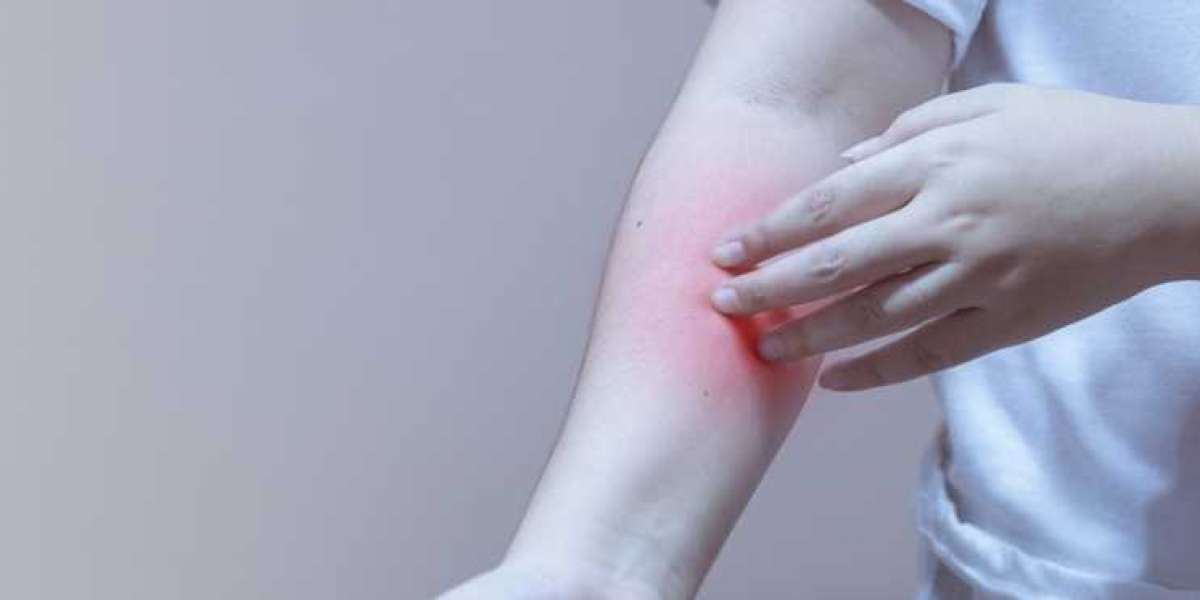If you’ve ever dealt with a skin condition, you know how frustrating it can be to manage symptoms, especially when treatments don’t seem to work as expected. But what if you were dealing with not one but two severe skin disorders at the same time?
Erythrodermic psoriasis and atopic dermatitis are two very different conditions, yet they share overlapping symptoms that can make diagnosis and treatment complicated. While having both simultaneously is rare, it’s not impossible—and it presents unique challenges for patients and doctors alike.
Understanding these conditions, their differences and the best treatment approaches is key to managing symptoms effectively. For some, investigational treatment through psoriasis clinical trials may even offer new hope. Let's take a closer look at what this means for those affected.
Understanding Erythrodermic Psoriasis
Erythrodermic psoriasis is one of the most severe forms of psoriasis, affecting nearly the entire body with red, inflamed, peeling skin. Unlike mild plaque psoriasis, which appears in patches, erythrodermic psoriasis spreads extensively and can cause serious complications, including dehydration, infection, and even heart failure.
Key Symptoms
- Widespread redness and severe scaling
- Intense itching, burning, and pain
- Swelling and fluid retention
- Rapid shedding of skin in sheets rather than small flakes
- Fluctuations in body temperature due to skin barrier disruption
Triggers
- Withdrawal from psoriasis treatments
- Severe sunburns
- Infections
- Certain medications, like corticosteroids
- Stress or sudden changes in health
Erythrodermic psoriasis is a medical emergency. If symptoms develop rapidly, hospitalization may be required to stabilize the body and prevent complications.
What Is Atopic Dermatitis? How Does It Differ?
Atopic dermatitis (AD), commonly known as eczema, is a chronic skin condition that causes dry, itchy, and inflamed skin. It often starts in childhood and can persist throughout life. Unlike psoriasis, which is linked to an overactive immune response targeting skin cells, atopic dermatitis is tied to a weakened skin barrier and hypersensitivity to irritants.
How It Differs from Psoriasis
- Appearance: AD causes dry, cracked skin with occasional oozing, while psoriasis results in thick, scaly plaques.
- Itch vs. Pain: Eczema is intensely itchy, while psoriasis is often painful.
- Triggers: Eczema flares are triggered by allergens, irritants, and weather changes, whereas psoriasis flares are linked to immune system dysfunction.
- Age of Onset: Atopic dermatitis commonly starts in infancy, while psoriasis can develop at any age.
Despite their differences, both conditions involve inflammation, which is why they can sometimes be confused with one another.
Can You Have Both Conditions at the Same Time?
The short answer? Yes, but it’s extremely rare.
Having both erythrodermic psoriasis and atopic dermatitis together presents a unique challenge because the symptoms can overlap. Both conditions cause extensive redness, peeling, and irritation, making it difficult to distinguish between them. However, their underlying causes are different, which means that treatment needs to be carefully tailored.
Some risk factors that could contribute to developing both conditions include:
- A genetic predisposition to autoimmune and allergic diseases
- A history of skin barrier dysfunction
- Severe immune system dysregulation
In rare cases, a person may have psoriasis but develop eczema-like rashes due to an allergic reaction or environmental triggers. Similarly, a patient with atopic dermatitis might experience psoriasis-like plaques due to an immune system shift.
The challenge lies in finding the right treatment approach. Medications that suppress the immune system for psoriasis may worsen eczema symptoms by weakening the skin barrier. This is why accurate diagnosis and a customized treatment plan are crucial.
Diagnosing Both Conditions: Challenges and Considerations
Diagnosing erythrodermic psoriasis alone is challenging, but when atopic dermatitis is also present, the process becomes even more complicated.
How Doctors Differentiate the Two
- Skin Biopsy: A small sample of skin can reveal whether the inflammation matches psoriasis or eczema.
- Medical History: Family history and personal triggers help guide diagnosis.
- Response to Treatment: If standard treatments for one condition fail, doctors may suspect an overlapping skin disorder.
Why Misdiagnosis Happens
- Both conditions can cause widespread redness and peeling.
- Secondary infections can mask the true underlying disorder.
- Some treatments for psoriasis can trigger eczema-like reactions, leading to confusion.
Because an incorrect diagnosis can lead to ineffective or even harmful treatment, it’s essential to see a dermatologist specializing in inflammatory skin conditions.
Managing Symptoms: What Works and What Doesn’t?
When treating both conditions together, the key is balance. What helps one condition might aggravate the other, so careful treatment planning is necessary.
Treatments for Erythrodermic Psoriasis
- Biologic medications targeting immune system overactivity
- Systemic treatments like methotrexate or cyclosporine
- Moisturizers and emollients to reduce dryness
- Hospitalization in severe cases to stabilize the body
Treatments for Atopic Dermatitis
- Topical corticosteroids to control inflammation
- Antihistamines to reduce itching
- Barrier repair creams to lock in moisture
- Avoiding allergens and irritants that trigger flare-ups
The Challenge
Many psoriasis treatments suppress the immune system, which can worsen eczema symptoms by weakening the skin barrier. On the other hand, excessive moisturizing—common in eczema care—can sometimes trap heat and worsen psoriasis flares. This is why working with a dermatologist for a personalized approach is essential.
Finding the Right Treatment Approach
Because both conditions require different treatment strategies, doctors often take a combined approach.
What Works?
- Targeted biologics: Some newer medications, like dupilumab, can help both conditions.
- Gentle skin care: Using fragrance-free, non-irritating products helps reduce symptoms.
- Stress management: Since both conditions can flare due to stress, relaxation techniques can help.
What to Avoid?
- Overuse of steroids, which can thin the skin over time
- Harsh soaps or scrubs that strip moisture
- Ignoring symptoms until they worsen
For those struggling to find relief, clinical trials for psoriasis and eczema treatments may offer promising solutions.
You may also read: Psoriasis Triggers You Didn’t Know About: Unexpected Causes of Flares
Conclusion
Dealing with erythrodermic psoriasis atopic dermatitis together is rare but possible. Since both conditions affect the skin in different ways, a personalized approach is key to managing symptoms without making either condition worse.
Key Takeaways:
✔ Erythrodermic psoriasis is a severe form of psoriasis that requires urgent care.
✔ Atopic dermatitis is a chronic condition that affects the skin barrier and causes intense itching.
✔ Having both at the same time is rare but presents unique challenges.
✔ Proper diagnosis and personalized treatment are essential.
✔ Emerging treatments, including biologics and clinical trials, may provide new hope.
If you’re struggling with symptoms that don’t respond to standard treatments, it may be time to consult a dermatologist. Ready to take the next step? Consider exploring clinical trials or seeking expert guidance for tailored care.







